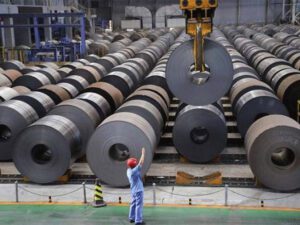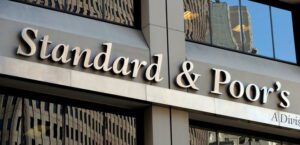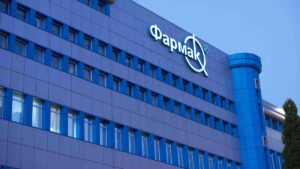
The international rating agency Fitch Ratings has raised the long-term foreign currency issuer default rating (IDR) of JSC Ukrzaliznytsia (UZ) from “C” to “CC”.
The rating action follows Fitch’s upgrade of Ukraine’s sovereign ratings to ‘CC’ on 17 August 2022. This rating action has a direct impact on UZ’s IDRs as it is considered a state-related entity.
It indicates that the strategic importance of the company for the state increased after the start of the Russian-Ukrainian war in February 2022. Government incentive to support UZ remains strong, with the state providing non-refundable cash grants (UAH 10 billion) to support the company’s core operations. However, EP’s financial resources and cash flows depend more than before the war on the financial performance of the Ukrainian state, the agency also believes.
The rating action did not affect UZ’s standalone credit profile at ‘ccc’.
UZ’s Eurobond ratings are in line with its Long-term foreign currency IDR. Fitch clarifies that Eurobonds accounted for 75% of EP’s debt at the end of 2021.

Ukrainian metallurgical enterprises in July this year reduced steel production by 85% compared to the same period in 2021, to 281,000 tonnes, taking 35th place in the ranking of 64 countries – the world’s main producers of this product, compiled by the World Steel Association (Worldsteel).
According to Worldsteel data released on Tuesday, in July 2022, a decrease in steel production was recorded in most countries of the top ten, except for India and Iran, versus July 2021.
The top ten steel-producing countries in July are as follows: China (81.430 million tonnes, a decrease of 6.4% compared to July 2021), India (10.070 million tonnes, an increase of 3.2%), Japan (7.326 million tonnes , less by 8.5%), the USA (7.002 million tonnes, less by 6.4%), South Korea (6.086 million tonnes, less by 0.6%), Russia (5.5 million tonnes, less by 13.2%), Germany (2.972 million tonnes, less by 2%), Brazil (2.823 million tonnes, less by 8.7%), Turkey (2.684 million tonnes, less by 20.7%) and Iran (2.012 million tonnes, an increase of 34.1%).
Ukraine is in 35th position with 281,000 tonnes of steel (85% less by July 2021). In June this year, the country produced 295,000 tonnes, in May – 308,000 tonnes, in April – 281,000 tonnes, in March – 200,000 tonnes, in February – 1.374 million tonnes, and in January – 1.851 million tonnes.
In general, in July this year, steel production in the world decreased by 6.5% compared to the same period last year, to 149.277 million tonnes.
Over seven months of 2022, the top ten steel-producing countries look like this: China (609.280 million tonnes, a decrease of 6.4%), India (73.305 million tonnes, an increase of 8%), Japan (53.322 million tonnes, a decrease of 4. 9%), the USA (48.036 million tonnes, less by 3%), the Russian Federation (41.432 million tonnes, decrease by 7%), South Korea (39.918 million tonnes, less by 3.4%), Germany (22.532 million tonnes, less by 5.1%), Turkey (21.639 million tonnes, a decrease of 6.9%), Brazil (20.285 million tonnes, a decrease of 3.5%) and Iran (17.394 million tonnes, an increase of 3.7%).
Ukraine, following the results of seven months of this year, took 20th place with the smelting of 4.820 million tonnes of steel (less by 62.1%).
In general, in January-July 2022, some 64 countries produced 1.102 billion tonnes of steel, which is 5.4% less than in the same period in 2021.

S&P Global Ratings raised its foreign currency long- and short-term sovereign credit ratings on Ukraine to ‘CCC+/C’ from ‘SD/SD’ and the long-term issue rating on the restructured foreign currency bonds to ‘CCC+’ from ‘D’ on August 19.
“The rating action follows the completion of Ukraine’s eurobond restructuring,” S&P said in a press release on its website.
In addition, S&P said that the outlook on the long-term ratings is stable. The agency affirmed our local currency sovereign ratings at ‘CCC+/C’ and raised the national scale rating to ‘uaBB’ from ‘uaBB-‘.
“The stable outlook balances our view of the reduction in Ukraine’s government debt service requirements and our expectation of steady international financial support against risks to Ukraine’s economy, external balances, public finances, and financial stability stemming from the ongoing war,” S&P said.
Its experts said that As a result, Ukraine’s foreign-currency debt repayments have declined by roughly 40% over 2022-2024 to about $10 billion from $16 billion before the restructuring. Repayments now primarily comprise payments on official debt–mostly owed to the International Monetary Fund (IMF) and the International Bank for Reconstruction and Development–and foreign-currency domestic-law bonds, held primarily domestically, including by state-owned banks.
“As a result, the near-term risks to the government’s liquidity position and, more broadly, its capacity to honor commercial debt, including in foreign currency, appear manageable,” S&P said.
At the same time, given the ongoing conflict with Russia, Ukraine’s ability to stay current on its debt is highly dependent on factors largely outside of government control.
The agency estimated Ukraine’s real GDP will contract by 40% in 2022 on the back of collapsing exports, consumption, and investment. “Given substantial damage to physical and human capital, Ukraine’s medium-term growth prospects are uncertain and hinge on regaining a level of territorial integrity and access to the Black Sea, alongside sizable reconstruction efforts,” S&P said.
In S&P latest projections, the 2022 fiscal deficit will be at least 20% of GDP, compared with 3.5% before the conflict.
The agency said that one of the key assumptions behind its rating is that donor fund disbursements, primarily from the United States and EU, will continue in the coming months. S&P added that although the timing and details of the new IMF program remain to be seen, if approved it could further ease government financing pressures, and support confidence and macroeconomic stability.
Regarding the hryvnia exchange rate, S&P expects hryvnia to weaken further, adding to inflationary pressures. Speaking of the quality of banks’ assets, it said the outlook for them challenging, despite Ukraine’s banking system entered the war with adequate liquidity and capital buffers.
S&P added that it could lower the ratings in the next 12 months should the security outlook deteriorate, putting further pressure on Ukraine’s foreign exchange reserve position or the government’s administrative capacity, or resulting in much higher government gross financing needs than we currently anticipate. Absent an escalation of the conflict, material delays in foreign donor support could also lead to a downgrade, S&P said.
“We could raise the ratings if Ukraine’s security environment and medium-term economic outlook significantly improve,” S&P said, describing another scenario.

The rating agency Expert-Rating has affirmed the financial stability rating of KSG Agro SA (Switzerland), the holding company of the agricultural holding KSG Agro, at the level of “uaA+” on the national scale (corresponds to the BBB level on the international scale), the company said in a press release on Wednesday following an audit of its activities over the first half of the year.
According to the rating agency, this assessment of the company’s performance in the first half of 2021 is due to an increase in the level of coverage by its own capital of its debt obligations, the company’s profitability and a good level of its EBITDA to available loans.
“Throughout the period from June 30, 2020 to June 30, 2021, KSG Agro’s equity capital grew by 52.46%, up to $14.47 million, including due to its profitable activity and the reduction of retained loss. For the same period the liabilities of KSG Agro S.A. decreased by 12.52%, down to $55.7 million. The decrease in liabilities of KSG Agro S.A. was mainly due to selling three subsidiary companies in May, 2021,” the rating agency said in the report.
According to it, debt obligations of KSG Agro S.A. as of June 30, 2021, decreased by 12.52% compared to June 30, 2020, to $55.69 million. Long-term loans predominated in the structure of the company’s debt obligations as of that date: their volume increased by 7.52%, to $27.25 million, whiles the volume of short-term liabilities decreased by 54.19%, to $2.91 million.
The agency noted that EBITDA of KSG Agro SA in the first half of 2021 decreased by 22.49% compared to January-June 2020, to $2.69 million. At the same time, the ratio of EBITDA to its loan obligations as of June 30, 2021 decreased by 2.03 p.p. versus the same date last year, to 8.95%, which indicates the company’s ability to service its debt obligations.
The agency’s report indicated that the current macroeconomic situation in Ukraine did not significantly affect the sales volumes of the agricultural holding’s products, in particular, its revenue in the first half of 2021 decreased by 12.1% compared to the same period in 2020, to $6.81 million. During the specified period, the net profit of KSG Agro increased 48 times, to $13.7 million, mainly due to the sale of its subsidiaries.
“Therefore, according to the results of the first half of 2021, KSG Agro S.A. demonstrated high profitability indicators,” the rating agency said.
The agency recalled that the borrower or the particular debt instrument with rating “uaA+” is characterized by a high creditworthiness compared to other Ukrainian borrowers or debt instruments.

Rating agency Expert-Rating has affirmed the financial stability rating of the agricultural holding KSG Agro S.A. at the level of “uaA +” on the national scale, according to the agency’s website.
The agency notes that a borrower or a separate debt instrument with a “uaA +” rating is characterized by high creditworthiness compared to other Ukrainian borrowers or debt instruments.
According to the agency’s data, as of March 31, 2021, the share of loans in the liabilities of KSG Agro was 47.70%, of which short-term loans – 5.12%, and long-term loans – 42.58%.
As of the beginning of 2021, the equity capital of KSG Agro S.A. covered loans from banks by 44.16% and by 19.64% – the total volume of loans from banks and the parent company OLBIS Investments Ltd., owned by owner of the agricultural holding Serhiy Kasianov.
“In 2020-2021, the management of the holding took measures to improve its credit history by fully repaying and restructuring overdue debts on bank loans, and also reduced the impact of foreign exchange risk on the KSG Agro’s creditworthiness by changing the lending currency from the U.S. dollar to the functional currency, that is the main currency that a company conducts its business,” the agency said in a report.
Expert-Rating also notes that in 2020 the ratio of the company’s EBITDA to its total liabilities increased by 8.04 percentage points (p.p.) compared to 2019, to 11.35%, EBITDA to loans received – by 16.70 p.p., to 23.94%, and EBITDA to bank loans – by 34.81 p.p., to 54.28%.
“The current level of EBITDA of KSG Agro S.A. covers a significant share of interest bearing liabilities in 2020, it exceeds the cost of paying interest on loans by over 4 times and the total financial expenses of the holding by over 3 times,” the report said.
The agency clarifies that as of December 31, 2020, the agricultural holding did not issue debt securities, except for short-term bills, the amount of debt on which was estimated at $2.35 million.
According to Expert-Rating, due to the listing of shares of KSG Agro S.A. on the Warsaw Stock Exchange (WSE), the agricultural company can issue new shares, thereby increasing the liquidity and value of its shares.
According to the agency, as of March 31, 2021, some 64.62% of the company’s shares belonged to Kasianov, who manages it through OLBIS Investments Ltd., 35.17% of the shares were in free circulation on the WSE, and 0.21% accounted for treasury shares.

Farmak pharmaceutical company (Kyiv) ranked fourth in the rating of companies in terms of sustainable development, according to a company’s press release.
According to the report, the rating was developed and conducted by experts of the Dengi and Korrespondent publications in partnership with the UN Global Compact Network Ukraine. In general, the rating includes 39 companies from various sectors of the economy, including the pharmaceutical company Darnitsa.
All rating participants were tested according to environmental, social and corporate governance (ESG) criteria. The jury took into account the anti-corruption policies and practices of companies, the situation with gender balance in the top management bodies, the average level of wages excluding the top staff, a set of key social programs and the amount of their funding, as well as the amount of funding for energy modernization and the dynamics of reducing the carbon footprint.
“The rating methodology reflects the realities of the world economy and focuses on indicators that should be a priority for Ukrainian businesses. Development of legislation on non-financial activities would contribute to the growth of a culture of business sustainability and accelerate the economic transition of Ukraine in accordance with the Sustainable Development Goals,” Partnership Manager at the UN Global Compact Network in Ukraine Alina Konovalchenko said.
“To assess the achievements in sustainable development, it is important to look not only at the company’s projects, but also at the context. That is, by what methods the company achieved results, whether the changes will be long-term and systemic, and how they will affect the stakeholders. Our position in the rating is a good confirmation that social responsibility is an integrated approach, from transparent financial reporting, fair tax payments and decent working conditions to environmental initiatives,” Executive Director of Farmak Volodymyr Kostiuk said, adding that Farmak is the first Ukrainian pharmaceutical company to join the UN Global Compact.
Farmak is the leader of the Ukrainian pharmaceutical market, it produces medicines in all 14 therapeutic groups.
© 2016-2025, Open4Business. All rights reserved.
All news and diagrams placed on this Web site is made for internal use. Its reproduction or distribution in any form are welcome in case of placing a direct hyperlink to a source. Reproduction or distribution of information which contains Interfax-Ukraine as a source is prohibited without the written permission from the Interfax-Ukraine news agency. Photoes placed on this site are taken from open sources only; rightholder are welcome to make demands to info@open4business.com.ua , in this case we are ready to put your copyright to a photo or replace it.